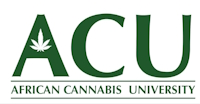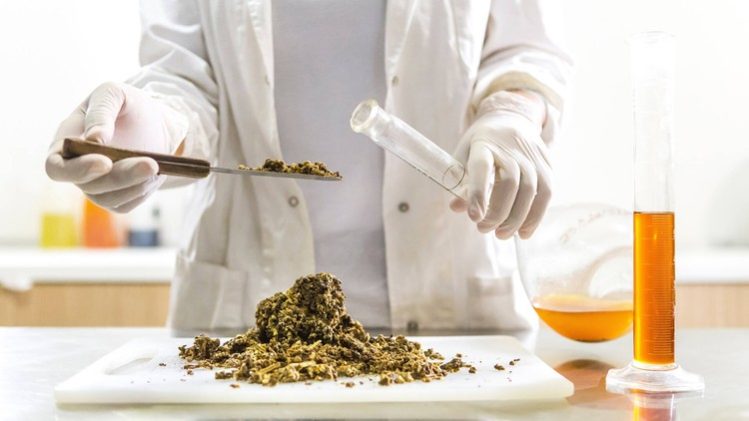Your health matters the most. We have seen brands that have improperly store their products. Brands that leave hemp flowers on the same floor that their employees walk on. These same brands are white labeling their products to others. It’s important to verify that the products are fully tested.
It’s also important to make sure that the product is not tested by the same company.
Introduction
Your health matters the most. We have seen brands that have improperly store their products. Brands that leave hemp flowers on the same floor that their employees walk on. These same brands are white labeling their products to others. It’s important to verify that the products are fully tested.
It’s also important to make sure that the product is not tested by the same company.
In this course, we will cover the following topics.
CBD Brand information
Cannabinoids
Terpenes
Pesticides
Residual Solvents
Microbials, Mycotoxins, & Heavy Metals testing
Verify that the lab report is legitimate
How important is it for you to purchase a product knowing that it was tested properly by a legitimate testing facility and that the product is from the right company.
There have been reports of counterfeit Cannabis products being sold on the market. It’s important to verify that information.
In this lesson, we are covering how to verify that the lab that is testing the product, the product is what it states and the date of testing.
The Sample Certificates of Analysis were provided to Americans for Safe Access by CannaSafe, a Patient Focused Certification (PFC) and ISO/IEC 17025 accredited laboratory located in Van Nuys, CA, and is reprinted here with permission from their client KOI. Below are some things to take note of that are present:
The name, address, contact information, and the license # (where applicable) of the testing facility.
a. Cannabis testing laboratories are required to be licensed by most states, and in some states, hemp cultivators may send their products for testing to licensed cannabis testing facilities.The name of the product and any other identifiers printed on the label (e.g., the amount of CBD in the bottle, in this case, 500mg).
a. What is printed on the report should match the label with regard to the product name, dosage, lot number, batch number, and any other identifiers listed.Sample identification number
a. This number is used by the laboratory to track the sample. This may include any state-required tracking information, a unique identifier developed by the laboratory, or both.The date the product was submitted for testing and the date testing was completed.
a. This is important to know to ensure that newly cultivated and manufactured products are being tested and that testing is done in a timely manner upon receipt of the sample.
Cannabinoid & Terpene Content
It’s important to understand the Cannabinoid and Terpene content of any product that you purchase. For example, a Full Spectrum CBD product will include a variety of Cannabinoids including less than or equal to .3% of Delta 9 THC. If that lab report does not show any Delta 9 THC, then that product is considered Broad Spectrum CBD.
Now if the labels state Full Spectrum CBD or Broad Spectrum CBD and the only cannabinoid that is shown is CBD then that product is a CBD Isolated based product.
Since the product in the lab report is a balm, the product is CBD Isolate with added essential oils. The container holds approximately 1.5 oz or 45 grams of content.
Cannabinoid Content(6)
This is also known as the potency of the product. This is where to find information on what cannabinoids have been detected and in what quantity. This is especially important for people to know so that they can determine the exact dose that they are taking in the event it needs to be adjusted. It is also important to know if the consumer does not want a specific cannabinoid, such as THC, in their product.
For flower products, the dosage is typically presented in a percent by weight, e.g., 10% CBD. 10% CBD is equal to 100 MG of CBD per gram.
For non-flower products, such as edibles or topicals, dosage information is typically presented in mg/g or mg/mL. Patients may then use this information to determine how much is in a dose that they are taking.
This COA also lists the LOD and LOQ. LOD is the Limit of Detection, which is the smallest amount that the instrument can accurately identify. LOQ is the Limit of Quantification, which is the smallest amount that the instrument can accurately quantify.
Terpene Content (7)
a. Terpenes impart flavors and scents to cannabis and contribute to the entourage effect.
Pop Quiz
What is cannabinoid content also referred to?
Pesticide Content
Residual Solvents Content
Cannabinoids and terpenes are extracted using a number of different methods, some of which may include potentially harmful or toxic solvents such as butane or isopropyl alcohol. This test determines and quantifies the presence of any of those solvents.
A solvent is a liquid that is used to dissolve a substance in order to form a solution. In terms of Cannabis extraction, a solvent is used to separate the cannabinoids from the hemp flower.
Residual solvent, as the name suggests, is the remaining solvent that is present in cannabis extracts. Residual solvents usually occur when the required processing and solvent-purging methods or steps are not properly utilized.
Residual solvents can sometimes be present (get left behind) in cannabis oils, shatters, and waxes. They occur after the extraction or after post extraction processes such as winterization, which consists of soaking the cannabis extract in alcohol and freezing it in order to separate the residual products.
When the solvents that were used are not completely removed, there is a possibility that the residual solvents can remain in the cannabis products that are smoked or inhaled by users in appreciable quantities. Depending on the solvent in question, this may or may not be harmful to the user.
Microbials, Mycotoxins, & Heavy Metals Testing
What are Microbials?
(15) Microbiological contamination is a test for microbial species such as E. Coli and Salmonella. These contaminants can be quite harmful to people and pets who are exposed to them, particularly those with compromised immune systems.
Microbials are unique living organisms that live their entire life as a single cell. They are probiotics used for livestock, feed, and crops.
There has been a wider acceptance and recognition of the increasing benefit of microbial. With the amount of arable land per-person declining and expansion of population, global crop yields must increase to meet production needs. As a result, an increase in the demand for microbial products and agricultural production is being seen.
What are Mycotoxins?
(16) Mycotoxins consist of four aflatoxins (O1, O2, G1, G2) and Ochratoxin A. Ochratoxin A is a known carcinogen and can be dangerous. Aflatoxins are toxic and may cause immunotoxicity, teratogenicity, and hepatotoxicity.
Mycotoxins are toxic secondary metabolites produced by a fungus. Basically, they can be called fungal poisons. They are naturally occurring toxins produced by certain molds (fungi) and can be found in food. The molds grow on a variety of different crops and foodstuffs often under warm and humid conditions.
Aflatoxin B1 (AFB1) is one of the most potent naturally occurring carcinogens and is the most toxic member of this group of mycotoxins.
What is the Problem with Mycotoxins?
Mycotoxins are poisonous to both humans and animals. They cause a variety of adverse effects, including symptoms of acute poisoning. The long-term effects of chronic exposure to mycotoxins may include immune deficiencies and cancer. You can absorb mycotoxins by breathing them in — for example, through exposure to toxic mold in the environment, and also through your skin or through the intestinal lining if you eat foods contaminated with mycotoxins.
What are Heavy Metals?
(17) The four heavy metals typically tested for are lead (Pb), cadmium (Cd), mercury (Hg), and arsenic (As). Acute heavy metal poisoning can lead to feeling confused or numb, feeling sick and throwing up, or passing out. Chronic heavy metals poisoning can cause headaches, achy joints and muscles, and constipation.58
Heavy metals are generally defined as metals with relatively high densities, atomic weights, or atomic numbers. Some examples are Arsenic, Cadmium, Lead and Mercury
Heavy metal poisoning is caused by the accumulation of certain metals in the body due to exposure through food, water, industrial chemicals, or other sources. While our bodies need small amounts of some heavy metals — such as zinc, copper, chromium, iron, and manganese — toxic amounts are harmful.
Reading other parts of a Lab Report
There are other important parts of the lab report that should be covered.
Testing Summary (5)
a. This summary table shows all the tests that the sample was subjected to and what the outcomes of those tests were. This section is not required on a CoA but is nice to have so that consumers know immediately what standards the product has been tested to and what their outcome was without reading the entire report.
Moisture Content (8)
a. This is a measurement of the amount of water in a product and is determined by drying the sample. This is typically only done on flower samples. (Moisture leads to mold)
b. In the case of this product, NT stands for Not Tested. This product is a lip balm and not subject to moisture content analysis.
Water Activity (9)
a. This is a measurement of the amount of free water in a product. This is traditionally a test performed on food products to determine its potential for microbial growth but can be performed on other product types as well such as flowers and concentrates.
Foreign Matter (10)
a. This is a test that looks at the amount and type of extraneous material found in cannabis flower and products. Think dirt, bugs, hair and more.
Accreditations (11)
a. This laboratory has chosen to place any accreditations and certifications it has received here.
b. Accreditations and certifications show that the laboratory has undergone a review of its quality and operating systems by third-party reviewers to ensure compliance with their respective standards.
Signature Marks (12)
a. All tests should be reviewed by the laboratory prior to release. This test report has been reviewed and approved by the Laboratory Director and the Quality Manager. This is important for calling and verifying that the lab report is real.
Final Thoughts
Americans for Safe Access (ASA): https://www.safeaccessnow.org/


